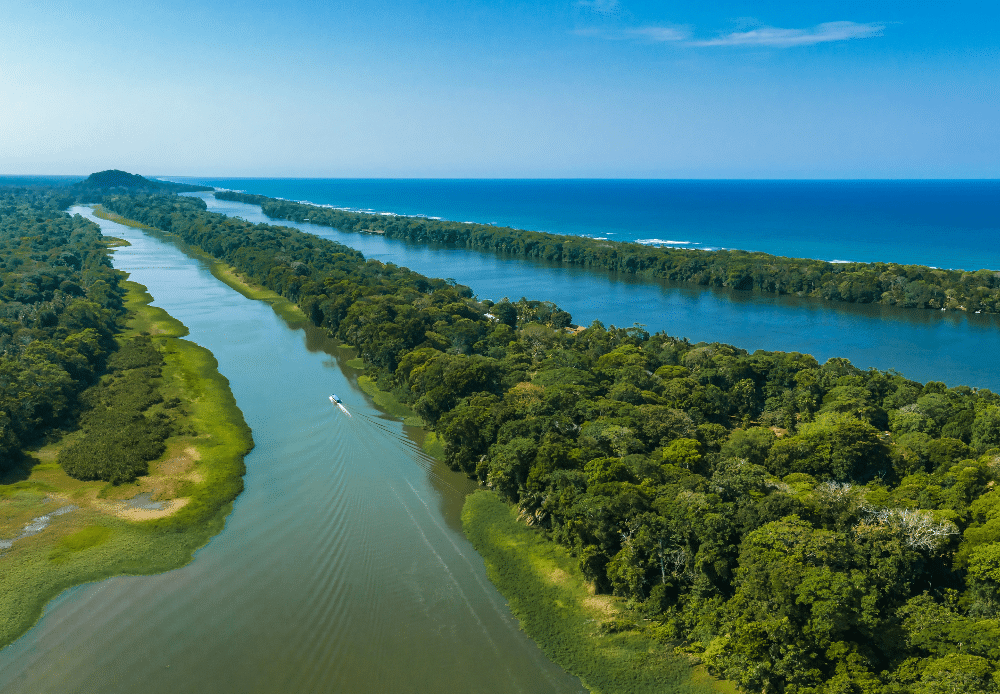
Tortuguero National Park: Your two-day budget-friendly itinerary [2024]
Costa Rica is a gorgeous county, but it can cost-a-lotta to visit! Introducing our guide to Tortuguero on a budget. Here, we’ll show you the best way to spend two jam-packed days in Tortuguero National Park, for less than $80 USD each. That’s cheap by Costa Rica Standards!
Costa Rica is an amazing place. two coasts, over 800 miles of coastline, thirty national parks, incredible marine and land biodiversity, and the famous Pura Vida lifestyle, Costa Rica is a must-visit for the eco-conscious backpacker.
But you’ll likely find Costa Rica incredibly expensive for the budget traveller, especially if you’re coming from neighbouring Nicaragua or nearby Colombia. Those National Park fees can really add up. That’s why we’re going to show you how to enjoy everything Tortuguero National Park has to offer, in two days, for just $80 USD.
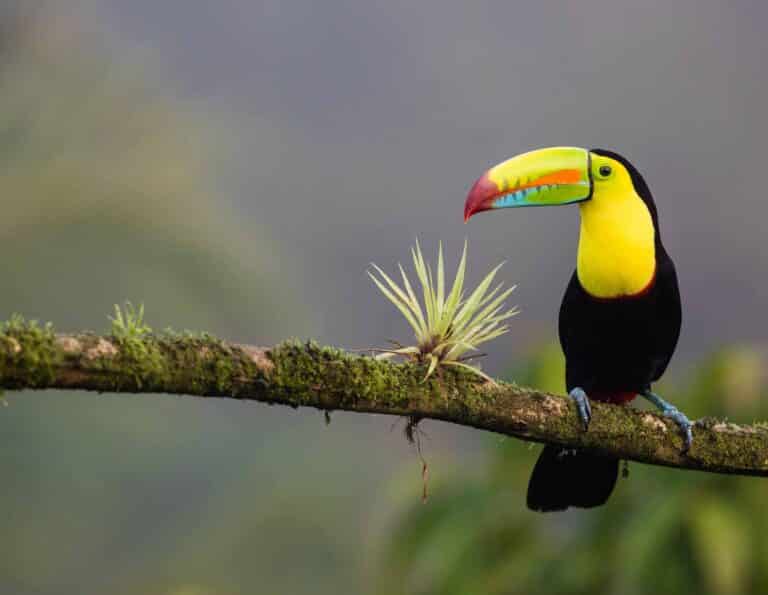
It’s not uncommon to see Toucans in Tortuguero National Park
WHAT IS TORTUGUERO NATIONAL PARK?
Tortuguero National Park is a protected area on Costa Rica’s Caribbean coast. Although initially set up as a sanctuary for nesting turtles, Tortuguero, like most of Costa Rica’s National Parks, is home to jaguars, ocelots, toucans, eagles, monkeys, and more!
So what’s so special about Tortuguero? Why would you want to visit Tortuguero National Park over, say, Manuel Antonio or Monteverde Cloud Forest? Well, unlike most of Costa Rica’s National Parks, walking quietly through the forest isn’t necessarily the best way to see the amazing biodiversity that Tortuguero has to offer. Instead, you’ll have to take to the waters.
That’s right! Unreachable by road, Tortuguero National Park consists of a network of canals, jungle, rainforest and lagoons. The best ways to see wildlife in this national park are to take a boat tour, hire kayaks, or head to the beach. Of course, like any national park in Costa Rica, jungle walks are still an option too – they’re just not your only option.
But Costa Rica, costs a-lotta! If you’re visiting Costa Rica on a budget, you might be wondering how to see everything Tortuguero National Park has to offer, without having to pay that ~$15 USD park permit every day of your stay.
Well, you’re in luck! We’re sharing our top tips to get the most out of one day’s national park permit in Tortuguero National Park, plus four more things you can do on a budget if you’d like to stay longer. So, keep reading for our ultimate guide to Tortuguero on a budget!
WHERE IS TORTUGUERO NATIONAL PARK?
Tortuguero National Park is located on the Caribbean coast of Costa Rica, towards the north of the country. It’s around ~4 hours from Limon by boat, and also ~4 hours from San Jose by car and boat.
If you’re looking to visit Tortuguero on a budget, transport there and back is likely to play a significant part in your costs. Tortuguero National park is only accessible by boat and plane, making getting there, eating out, and buying souvenirs expensive. So, how do you visit Tortuguero on a budget?

Tortuguero National Park: Gavilan Trail
WHAT’S SO SPECIAL ABOUT TORTUGUERO NATIONAL PARK?
Tortuguero National Park is pretty special. The park includes over 19,000 hectares (190 square kilometres) of jungle and river habitat and protects 22 miles of nesting beach for turtles. But what truly distinguishes Tortuguero from other national parks in Costa Rica is its intricate network of waterways, earning it the nickname ‘The Amazon of Costa Rica’ or the ‘Little Amazon’
There’s no other park in Costa Rica where you can hop on a boat and navigate through a world where caimans bask in the sun, river otters playfully swim, and a chorus of birdlife serenades your adventure. It’s a surreal experience that you shouldn’t miss on your Costa Rica adventures.
Plus, Tortuguero National Park lives up to its name! The name Tortuguero means “region of turtles,” which is no surprise given that it’s one of the best spots to see nesting sea turtles in Central America.
And it’s true – the National Park is one of the best places in the area to witness an arribada of turtles! An arribada – the Spanish word for arrival by sea – is when hundreds of turtles come out to lay their eggs on the beach. It’s an amazing thing to witness. Seriously, people come to Costa Rica just for this! And our guide to Tortuguero on a budget is going to show you how to see all that Tortuguero has to offer, without compromising.
CAN I SEE TURTLES AT TORTUGUERO NATIONAL PARK?
So, are you likely to see turtles at Tortuguero National Park?
Well, the quick answer is yes! Absolutely!
Tortuguero beach is the most important nesting site of the endangered Green Sea Turtle (Chelonia mydas mydas), a species that nearly became extinct in the 1960’s, due to hunting for meat and poaching of eggs. Giant Leatherback turtles (Dermochelys coriacea), Loggerhead turtles (Caretta caretta) and Hawksbill turtles (Eretmochelys imbricata) all come to nest on the beaches here too.
So why is Tortuguero National Park one of the best places in the world to see turtles? It’s all to do with the long-term conservation efforts in this area. The local economy of Tortuguero used to be propped up by the money earned from turtle poaching, driving species such as the Green Sea Turtle almost to extinction.
Now, turtles are the main reason that many travellers come to this difficult-to-reach national park. And don’t worry if you’re visiting Tortuguero on a budget – a turtle tour won’t break the bank!
WHEN IS THE BEST TIME TO SEE TURTLES IN TORTUGUERO NATIONAL PARK?
That depends on what species of turtle you’re hoping to see! The extremely rare Leatherback Sea Turtles have their nesting season between March and May. The Hawksbill turtles arrive between May and November, and the Green Turtle nesting season is July through October.
It is possible to see individual turtles at any time of the year. But for up-to-date information on arribadas, check out the official Tortuguero National Park website and Instagram pages.
Top tip: During the main Green Turtle nesting season (July-October), Tortuguero is busy with turtle-watching tourists. You can only visit the beaches at night with a guided tour (~$ 35 – 45 USD per person) soo be sure to book in advance. This is definitely the highlight of the region and should not be missed!
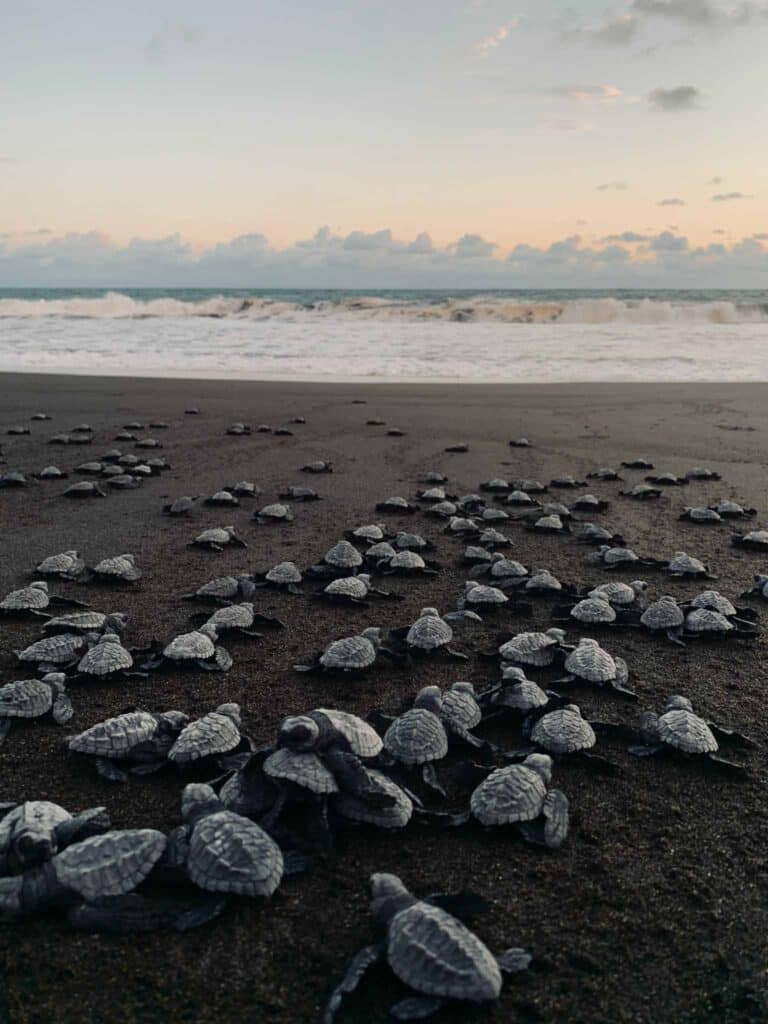
Baby turtles hatching in Costa Rica
TORTUGUERO NATIONAL PARK: GETTING THE MOST OUT OF YOUR ONE-DAY PARK PERMIT
HOW MUCH IS THE TORTUGUERO NATIONAL PARK PERMIT?
The rates for Tortuguero National Park are currently $15 USD for adults and $5 USD for children if you buy the pass online. If you buy your park pass at the entrance, it’s usually a couple of dollars more expensive. Oof – that’s expensive when you’re trying to visit Tortuguero on a budget!
You may see other budget travellers advising you to ‘just sneak in’, but it’s super important to pay for a National Park pass. Your park entry fee is not just for upkeep and maintenance, but it also funds conservation and wildlife protection. For more information on why the Costa Rica Park Pass is so important, head here.
But with Costa Rica’s National Parks usually costing ~$15 – $20 USD per day , what’s a budget traveller to do?
HOW TO GET THE MOST OUT OF YOUR TORTUGUERO PARK PERMIT?
Well, that’s where we come in. We’ve been to Tortuguero National Park, and the rest of Costa Rica too. We know how expensive it is. So, we’re sharing our ultimate two-day jam-packed itinerary to visit Tortuguero on a budget without compromising on activities!
Here’s how to get the most out of 2-days in Tortuguero National Park with a 1-day park permit. This will cost you ~$80 USD all in plus your choice of transport to the park and back. A bargain for two fun-packed days in Costa Rica! And even better value if you stay for longer and add in some of our budget friendly activity suggestions!
#1 GETTING TO TORTUGUERO
Think getting from A to B in Costa Rica is boring because they don’t do chicken buses like other Central American countries? Think again!
The boat ride to Tortuguero is one of our favourite parts of this 2-day itinerary. The morning boat from La Pavona (~1,5 hours) or Moin (~4 hours) will drive you through the shallow, wide, jungle-lined rivers of the ‘Little Amazon’. Relax, feel the breeze on your face, and enjoy the journey.
We took the 10am boat from Moin (Limon province) and arrived at around 2pm. If you’re lucky, your boat driver will also act as a guide, slowing down to show you any wildlife they spot. We were lucky to see sloths, crocodiles, two species of monkey and a toucan!
Top tip: If you’re coming from Moin, we recommend packing some snacks! If the river is low, the journey can take a little longer. You may stop halfway to drop people off at a smaller village, where there’ll be a small restaurant and bathrooms, but this isn’t guaranteed. Packing snacks will help you to visit Tortuguero on a budget as it’s so much cheaper than buying food in a place where everything has to be brought in by boat.
#2 EXPLORE THE TOWN
Once you arrive in Tortuguero town, head to your accommodation and ditch your backpack. Then, take some time to explore! Stroll down the main street, have a chat with the friendly locals, and savour the laid-back atmosphere.
Tortuguero town really is tiny. There are a few little souvenir shops and local eateries, offering a taste of the Costa Rican culture that permeates this remote village.
But the highlight of your afternoon will probably be the sea turtle conservancy, a small museum jam-packed with everything you could ever want to know about the four species of sea turtles that come to Tortuguero every year to lay their eggs.
It costs just $2.50 USD, perfect if you’re looking to visit Tortuguero on a budget. The entry cost goes towards the conservation of Tortuguero’s turtles, and we think it’s worth a visit. Don’t forget to head back down to the docks for a spectacular sunset in the evening! The pink and purple hues over the lush green jungle are truly beautiful.
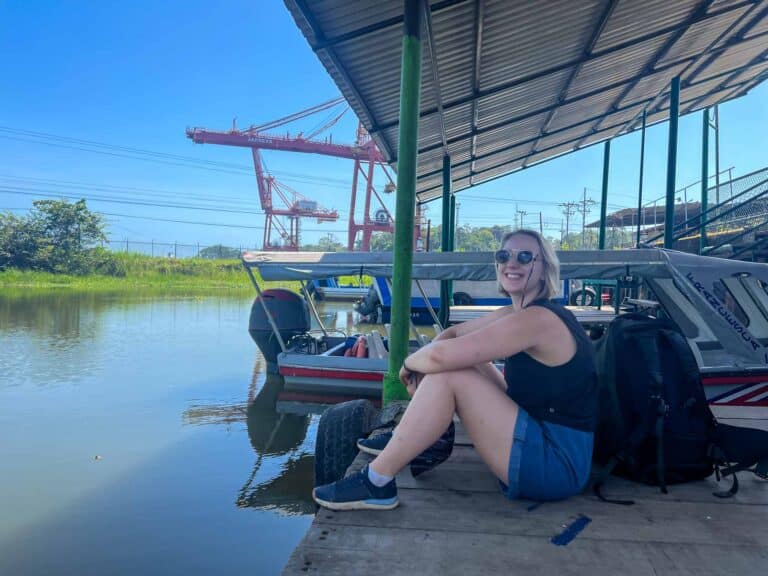
Waiting for the boat taxi: an adventure in itself!
#3 GET TO KNOW TORTUGUERO AFTER DARK
As the sun sets, head out on a guided jungle night walk to witness Tortuguero’s nocturnal wildlife. Night tours offer the best chance of catching a glimpse of the many nocturnal creatures that inhabit Tortuguero National Park. Armed only with a flashlight, explore the trails and witness the park come alive with the sounds of creatures that thrive in the darkness.
When dusk arrives and darkness sets in, so many of Costa Rica’s animals become more active. As you meander down the trails, you’ll have a higher chance of seeing armadillos, sloths, snakes, frogs, lizards, crabs, bats and cool insects. It’s a unique way to explore the jungle! We saw almost all the ‘big’ animals on our night walk, the highlights included sloths, an armadillo and a ‘boa constrictor’ (now just called a ‘Boa’)
This cost us around ~$20 USD per person as we booked it as part of a package with the activities for day two. You don’t need a park pass for your night walk, so you can save some money here by doing this on the evening you arrive.
#4 SECURE YOUR PARK PASS FOR THE NEXT DAY
Before diving into Tortuguero National Park, make sure to purchase your one-day park permit. The park permit will grant you access to the forest, beaches, and rivers that make Tortuguero National Park so incredible. You’ll need this for any boat tours, kayak hires, or jungle hikes within the park.
A one-day permit for Tortuguero costs ~$15 USD. We recommend buying this in advance from the official SINAC website as it’s cheaper than buying it at the office in-person. You can grab a park permit the evening before you need it, or the next morning – it doesn’t matter. Just make sure you enter the correct date when you purchase it.
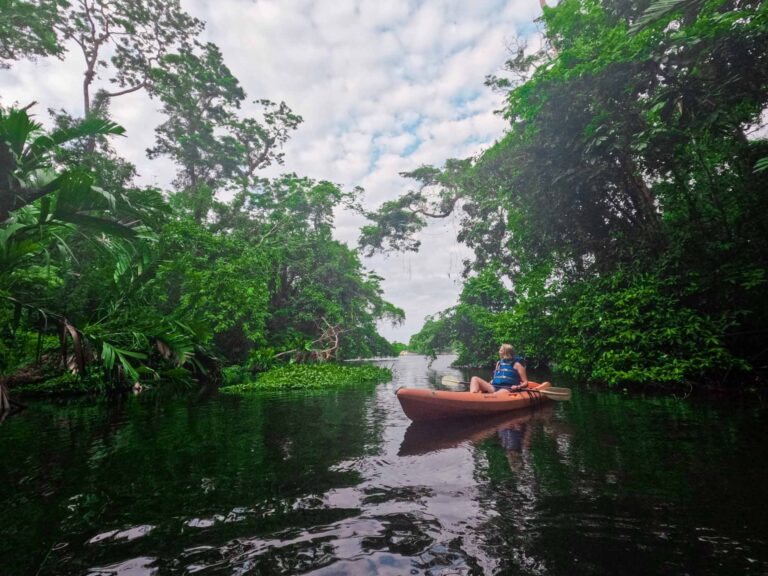
Exploring Tortuguero by Kayak
#5 TAKE TO THE RIVERS ON A BOAT WILDLIFE-WATCHING TOUR
A boat wildlife-watching tour is a unique and immersive way to experience this national park, and if you can only do one thing in Tortuguero, we’d recommend this!
Set your alarm and get ready for an early start as you prepare to glide through the park’s intricate waterways! Tortuguero’s wildlife are most active in the morning, and booking an early river wildlife watching tour will maximise your chances of seeing rare birds, alligators, caimans, howler monkeys, and maybe even manatees!
If you’re into birds, an early morning boat trip in Tortuguero is a must. It can be hard to spot these birds on your own, especially if you don’t know what you’re looking for, and it’s definitely worth getting a local guide that can point out different species and explain more about them. Keep an eye out for green ibises, great potoos, scarlet macaws, green macaws, and kingfishers. We definitely recommend bringing along binoculars!
Our ~2 hour Tortuguero boat tour cost ~$35 USD. We set off at 7am and came back around 9:30am, due to having to shelter under a couple of huge leaves during an unplanned rain shower!
We also paid an extra $5 USD for unlimited use of kayaks for the rest of the day.
Although the wildlife tends to be less active later in the day, hiring kayaks in Tortuguero allows you to enjoy the waterways at your own leisure later on in the day and is excellent value compared to booking a separate kayak tour or kayak hire.
Remember: You’ll need your park permit for this, so make sure to have it with you.
#6 HIKE THE GAVILAN TRAIL
Once your boat tour arrives back at Tortuguero docks, jump out and grab some breakfast. Your most budget-friendly option will be a traditional Costa Rican breakfast of eggs, cheese, bread, and gallo pinto (rice and beans).
Then lace up your hiking boots and get ready to explore the park on foot. We recommend hiking the 3-kilometre (2 miles) Gavilan Trail, which leads you into the dense jungle.
The trail winds through the dense rainforest, offering a chance to encounter diverse flora and fauna. Listen to the symphony of bird calls and the rustle of leaves as you watch out for crabs, coatis, or maybe even a jaguar! The trail is mostly flat, clear, and well signposted, but it can be muddy, so wear shoes with a good grip!
You’ll have to show your park permit again to get through the checkpoint, but once you’re in, you can explore the forest for free at your own leisure. If you want a guided hike deeper into the jungle, you’ll need to book in advance. Expect to pay about $75-95 USD for a full day guided jungle hike.
#7 HIRE KAYAKS TO EXPLORE THE WATERWAYS AT YOUR OWN PACE
After your hike, head back to Tortuguero village and grab some lunch. Then, get ready to make a splash!
For an extra couple of dollars, most tour companies will let you add kayak rental to your morning wildlife-watching boat tour. This is a really fun way to navigate the waterways at your own pace and connect with nature on a more intimate level.
Birds and mammals tend to be on the quieter side in the afternoon, maybe they also embrace the siesta. But you’re more likely to see butterflies, and maybe even catch a caiman snoozing. You’ll also be able to explore some of the harder-to-reach areas, rounding out your exploration of Tortuguero National Park.
There are several places in town to rent a kayak. On its own, a kayak usually costs about $20 USD per day, but you may be able to get this included with your boat tour price! If you’re not confident in navigating the waters by yourself, a two-hour kayak tour with a guide will cost around $30-40 USD per person.
#8 CHILL OUT AT THE BEACH
Got some time left? Cap off your two-day budget-friendly Tortuguero adventures by heading to the beach. The nicest beaches are within the national park, which won’t cost you any extra today since you already have your park permit.
Remember to check when the park closes. This time changes each day, but the rangers will usually stop letting people in just before dusk. As dusk changes throughout the seasons, we recommend that you check the signs up at the ranger’s station. There are also a couple of beaches outside of the national park area too!
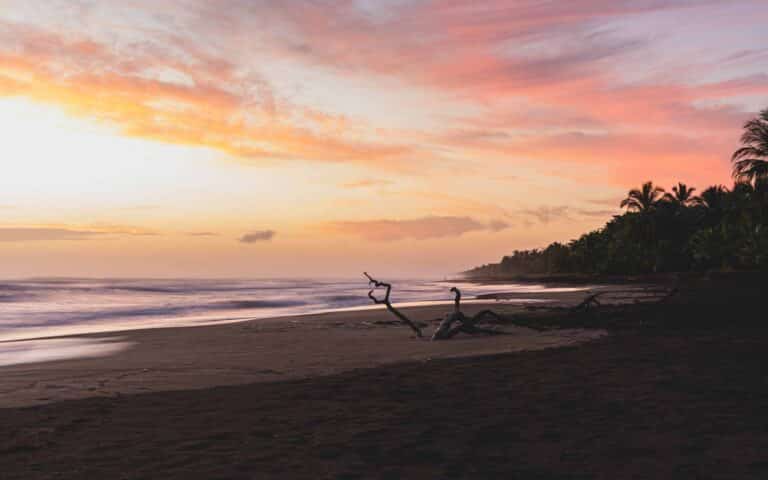
Catching a sunset at Tortuguero beach
5 MORE AWESOME THINGS TO INCLUDE ON YOUR BUDGET TORTUGUERO ITINERARY
This two-day budget friendly itinerary for Tortuguero National Park is pretty jam-packed. But, if you’re hoping to stay a little longer, here are a few budget-friendly activities to include!
#1 VISIT TURTLE HILL
Turtle hill, also known as Tortuguero Cerro, is a small, inactive volcano that’s the highest point on the Caribbean side of Costa Rica. The entrance costs just $2 USD, so it’s a perfect half-day addition to your budget Tortuguero itinerary.
The pathway winds through the jungle, where you are likely to see howler monkeys and blue poison dart frogs, both of which are common here. Howler monkeys have a roar like a big cat, and sound quite scary, but we promise they’re nothing to worry about! If you’re new to Central America, you’ll soon get used to them and their weird noises.
The hike itself is fairly easy. It’s steep, but paved, and there are a series of wooden steps to climb. The hardest bit of this hike is, like most hikes in Central America, hiking uphill in the heat and humidity. Bring plenty of water with you and take breaks if you need to.
Once you reach the top, you’ll be rewarded with panoramic views of the rainforest, Tortuguero village, and the brilliant blue Caribbean ocean which contrasts beautifully with the murky brown rivers of Tortuguero National Park. It’s well worth the effort!
You can visit Tortuguero Cerro alone, without a guide, by taking a 10-15 minute boat-taxi from the village. This blog post has some great information on how to get there.
#2 LEARN MORE ABOUT TURTLES
It might be small, but the Sea Turtle Conservancy in Tortuguero Village is stuffed with everything that you could possibly want to know about turtles!
There’s also tons of information on the other plants and animals that call the jungles and rivers of Tortuguero home. It’s a great place to start learning about the region’s wildlife, especially if the weather is a bit rubbish and you don’t want to go out walking!
Did you know: The Sea Turtle Conservancy opened in 1959, making it the world’s oldest sea turtle research and conservation group? These guys really are experts!
Admission is just $2.50 USD, making the Sea Turtle Conservancy the perfect place to spend a budget-friendly couple of hours in Tortuguero National Park.
They also provide eight-day volunteer stays where you can work directly with the turtles for $1949 USD (this includes food, lodging, volunteer training, and local tours). This is a less budget-friendly option, but we think that this would be a great place to volunteer during your travels!

Turtles in Costa Rica
#3 TAKE A CANOPY TOUR
What can I say, Costa Rica is crazy about those canopy tours! Building on the success of popular ziplining tours at Volcan Arenal and the Monteverde Cloud Forest, Tortuguero now also offers canopy tours. These include tree climbing, zipline rides, and rope swings for the adrenaline-seeking adventurer.
After exploring the waterways, head into the thick of Tortuguero’s rainforest, where light plunges through the canopy. Climb, swing, and zipline your way through the aerial ropes course, suspended bridges, and a Tarzan swing. And get up close and personal with the wildlife that call the canopy home.
The Tortuguero Canopy tour isn’t the longest or most extreme canopy tour in Costa Rica (that award goes to the Monteverde canopy tour). But at $35 USD, it is significantly cheaper than other canopy tours in Costa Rica. Plus, it’s super fun! If you’re planning to stay longer than just a couple of days in Tortuguero, we think this is the perfect daytime activity.
#4 CHILL OUT AT THE BEACH
This is Costa Rica after all, so what better way to spend your free time than relaxing by the ocean? Tortuguero Beach is where most people hang out. It’s considered one of the most beautiful beaches in the country. And whilst you can’t swim here due to the strong currents, it’s the perfect place to kick back. We recommend bringing snacks and a book!
The best beaches are in the National Park! You can combine a visit to Tortuguero’s beaches with the Gavilan Trail. If you’re on a tight budget, you should aim to explore most of the beaches on a day where you already have a park permit purchased. They’re nice, but we don’t think that they’re worth another ~$15 USD day permit to the national park.
#5 FIND A VOLUNTEER PLACEMENT
Are you looking to spend longer in Tortuguero National Park? One of the best ways to do this as a traveller on a budget is to spend some time volunteering in exchange for free bed and board.
Volunteering is a great way to give back to the countries you visit and save some money on your travels. If you’re lucky, you might even get some unique tours and experiences included as part of this.
There is an unbelievable amount of variety of volunteering positions in Central America. From helping out at a hostel front desk to organising tours and activities. Or, from working with conservation charities to planting trees, there’s bound to be something to suit your skill set and interests! That said, volunteer tourism – ‘voluntourism’ – can do more harm than good. We recommend doing your research and a great place to start is our popular ‘Voluntourism’ post here.

Sloths in Costa Rica
TOP TIPS FOR TORTUGUERO NATIONAL PARK
WEATHER & WHEN TO VISIT TORTUGUERO NATIONAL PARK
Tortuguero National Park has a tropical climate, which basically means it’s hot and steamy! Daytime temperatures of 28 Celsius and upwards are common all year, and the humidity is consistently high. The park’s lush green rainforest and river habitats thrive due to the year-round rain showers. In fact, Tortuguero is one of the rainiest areas of Costa Rica!
Don’t worry about the weather in Tortuguero National Park when you are deciding when to visit this part of Costa Rica. It rains here all the time, and the peak Green Sea Turtle nesting season is the rainy season. Caribbean rains can blow in on the wind and hang around for weeks. Even in the dry season, daily showers are common.
Sadly, due to climate change, these rain showers are becoming shorter and less frequent. When we visited Tortuguero National Park, the rainforest was brown, the trails dry and dusty and there were crispy leaves underfoot.
As responsible travellers, we all have a responsibility to be better. Head to our sustainability hub for all of our free resources on how to lower your carbon footprint and be a more environmentally-conscious traveller on your adventures.
Here are some posts that we think you might be interested in:
The Beginner’s Guide to Carbon Offsetting: how to offset your flights and reduce your emissions
5 Ways that YOU can reduce your travel emissions
What I wish everyone knew about slow travel
WHAT TO WEAR FOR TORTUGUERO NATIONAL PARK?
- Lightweight Clothing: Costa Rica’s tropical climate calls for light, breathable clothing. Pack comfortable shirts, shorts, and sundresses. Don’t forget a swimsuit for impromptu dips in the ocean or hotel pools.
- Waterproofs: Tortuguero’s waterways and occasional rain showers necessitate waterproof essentials. Bring a quality rain jacket, waterproof backpack, and dry bags to protect your electronics and valuables during boat tours.
- Sturdy footwear: Explore Tortuguero’s trails and beaches with comfortable, closed-toe shoes. Sneakers or hiking sandals with good traction are ideal for navigating diverse terrains.
WHAT TO PACK FOR TORTUGUERO NATIONAL PARK?
- Insect Repellant: Costa Rica’s jungles are home to insects, so pack a reliable insect repellent to ward off mosquitoes. Consider a long-sleeved shirt and pants for added protection during evening activities.
- Sunscreen: With its sun-kissed beaches, Tortuguero demands sun protection. Pack a high-SPF sunscreen, a wide-brimmed hat, and sunglasses to shield yourself from the tropical rays. And remember to check that it’s biodegradable and safe for marine life!
- Binoculars and Camera: Tortuguero is a haven for wildlife enthusiasts. Enhance your experience with binoculars to spot elusive creatures and a camera to capture the park’s stunning landscapes and diverse fauna.
- Eco-friendly toiletries: Contribute to the park’s conservation efforts by packing eco-friendly toiletries. Opt for biodegradable soaps and shampoos to minimize your environmental impact.
- Reusable water bottle: Stay hydrated in the tropical climate by carrying a reusable water bottle. Some lodges provide filtered water, contributing to sustainable travel practices. And if you have a water-to-go bottle, you can fill it up anywhere!
- Power adaptors: Costa Rica uses Type A and Type B electrical outlets. Bring a suitable power adapter to keep your devices charged and ready to capture the beauty of Tortuguero.
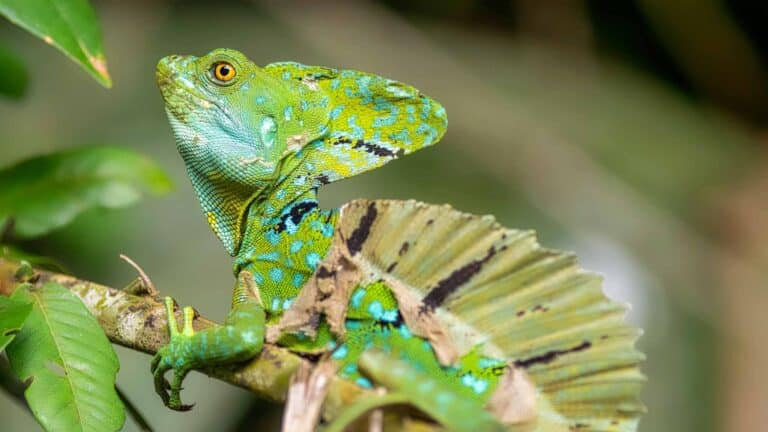
Look out for lizards!
IS TORTUGUERO NATIONAL PARK WORTH A VISIT?
Absolutely! Tortuguero National Park is definitely worth a visit for nature enthusiasts, wildlife lovers, and those seeking a unique and immersive experience in Costa Rica.
From the incredible waterways to the playful howler monkeys swinging through lush rainforest jungle, we think that Tortuguero National Park is a must-see during your Costa Rica adventures. It’s a unique, less touristy area of Costa Rica that’ll give you a taste of the real Costa Rica and not just the side they show for tourists.
As always, we’d love to hear what you thought about Costa Rica and Tortuguero National Park! Leave us a comment below – it’ll help other travellers too!
LIKE IT? PIN IT!
SAVE THIS POST TO YOUR COSTA RICA PINBOARD TO INSPIRE YOUR NEXT ADVENTURE

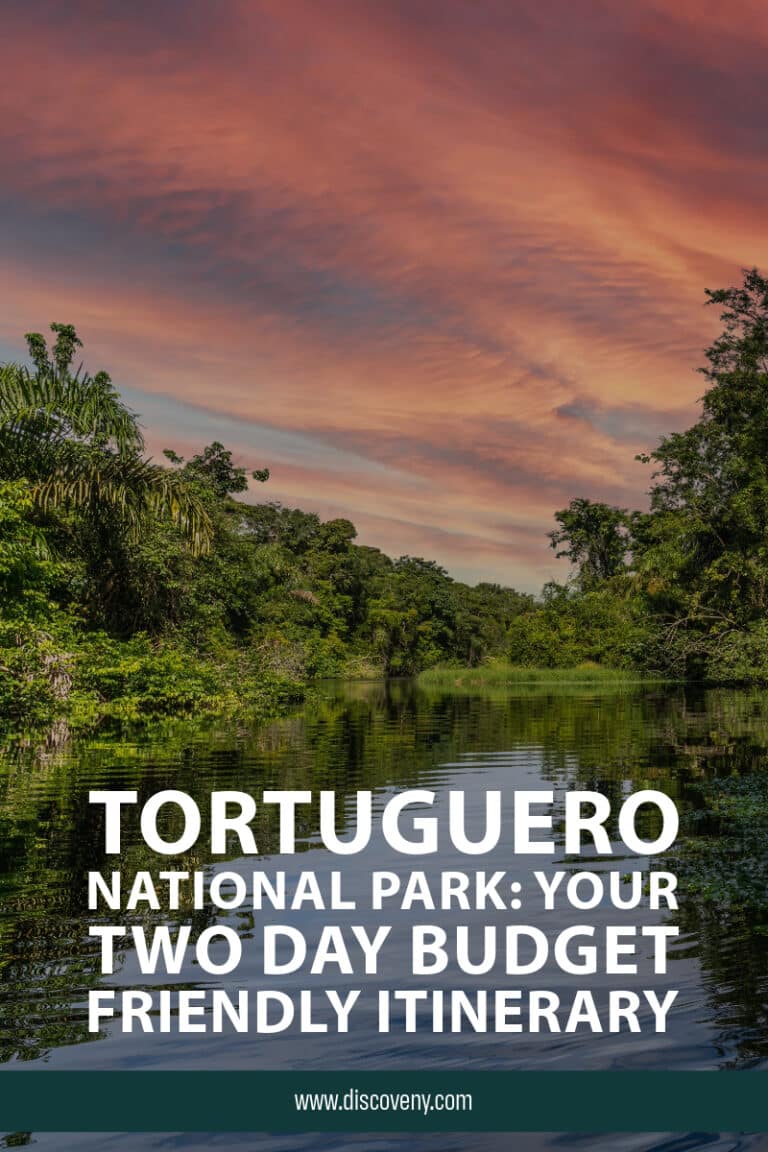
Follow our daily adventures on Facebook and Instagram
Disclaimer: The information and advice provided in this blog are the author’s opinions and based on their personal experiences. All information was accurate at the time of writing. However, things can change quickly, so always double-check current conditions and guidelines before setting out. Remember, your travels and safety are your own responsibility, and this blog can not be held responsible for anything that might happen on your adventures! Always exercise caution and good judgment. Oh, and don’t forget to get travel insurance! Happy travels!
This post may contain affiliate links (yay for transparency!) This means that I will earn a small commission, at no additional cost to you, if you click the link and choose to buy the product. I only link to stuff I have personally bought and found useful and never endorse crap. Your support helps keep the site going, thank you!
Alice
Alice is a UK travel blogger who advocates sustainable travel and being more eco-conscious on a budget. She loves coffee, her houseplants and summiting mountains.
You May Also Like

Backpacking in your mid-twenties: 6 reasons why Central America is the PERFECT destination.
November 11, 2023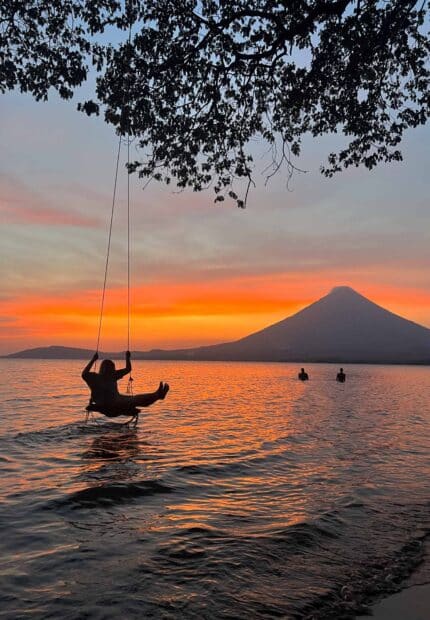
Do I Need to Speak Spanish to Travel in Central America?
April 13, 2024